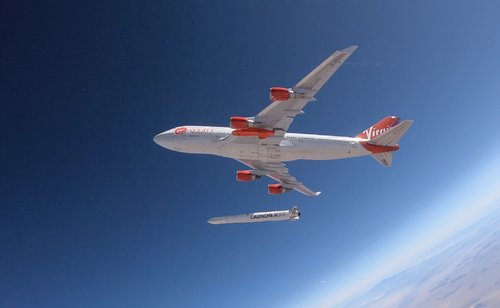As I've pointed out *repeatedly* (and without any objectively substantiated refutation, I might add) in this thread, Allen's ultimate goal, while (for whatever reason - expediency?) taking admittedly highly questionable intermediate steps like expendable rocket stages (yuck!) into consideration, was evidently a fully reusable winged HTHL TSTO RLV, a both worthwhile and promising objective for advancing the goal of a cost effective, reliable, and responsive LEO transportation shuttle. There is of course absolutely no guarantee whatsoever that his conceptual design would have converged and delivered the intended benefits, but I for one deeply mourn his passing, for it represents just one more missed opportunity for at least trying to help us leave our earthly cradle for good.
You never provided substantiated data to support your claims.
Eh, that's more than a bit disegneious and also a bit insulting since there are multiple links IN THIS THREAD pointing to both Alan and Stratolaunch saying exactly what Martinbayer notes them saying. The ultimate goal WAS a TSTO/HTHL fully reusable system aimed at the goal of cost effective, reliable and responsive LEO transportation.
In fact I point out earlier that every company associated with StratoLaunch said that full reusabllity was required for it to be economic:
And even if you're talking "didn't provide substansiated data on using LOX/LH2 in an air launched spaceplane design", (and granted I'm only up to page 6 on reviewing this thread) he has actually presented at least two as linked and I'd point out that despite the 'doubt' experssed so far it's rather odd that such doubts are not in the minds of people who actually deisgn such concepts.
Take Dan DeLong's "Frequent Flyer" Air Launched SSTO concept, link found here:
Stratolaunch: General Company and Development Updates and Discussions

forum.nasaspaceflight.com
Air Launched, around 14,000lbs to LEO, and around 380,000lbs full-up for take off. Very detailed estimated mass breakdown on page 34. Mass is limited of course due to the requirement of putting it on a single 747 airframe. Want more examples of proposed Air Launched SSTO Concepts, use that as a search term even the Air Force/NASA "Horizontal Take Off" study comes up. You know the one where they check of various cryogenic stages (and we all are aware of NASA's love for Hydrogen as a propellant) for air launch and are not overly concerned about use of liquid cryogenics on a carrier aircraft or during launch? Almost like they actually have done it before and maybe know that while it takes some engineering work for once it really IS just more engineering.
But no one has built one so it's impossible right? Consider that no one has built one due to the cost rather than technical difficulties because that is in fact the conclusion of most of the air launch studies done. The technical aspects are handled it's the cost and in most cases how those relate to profits that are the issue. Discussion of Air Launch economics here:
And there's no arguing that what Alan intended was to try and build a method to more cheaply and relaiablly access LEO as that's excactly what he stated he was trying to do. He then went about it the exactly wrong way with no launch vehicle availalbe to be used with the carrier aircraft he was building and no company willing to take the risk of doing so. As noted for rather obvous reasons as the Roc was a one-off which means any down-time or heaven forbid accident would leave the LV stranded and useless.
On the other hand given the Roc's carrying capacity compared to existing airframes any LV would have been allowed both higher structural margins and more payload to orbit. (Somewhere around 15,000lbs for a smaller Gryphon LV, see:
https://www.secretprojects.co.uk/threads/stratolaunch.14179/page-10#post-352787, to between 8,000lbs to 14,000lbs as examples) Compared to LV designs using more 'economical' airframes such as QuickReach 1/2 (2,000lbs to 8,000lbs from a C-17 and modified 747), SwiftLaunch, (1800lbs, An-124/C-5) or AirLaunch (between 8,000lbs and 10,000lbs, with a modified 747) so Roc could put more payload on-orbit per flight.
Economics though were the main question as a single, specially constructed aircraft (which inherently costs more and limits flight oppotunities) has an automatic higher price base than modified or unmodified production airframes. Even understanding Alan's stated plan the main question is why go with something like Roc and in the end it looks like a straight forward bias towards payload to orbit as primary over cost.
Sad to see it go because it would have been nice to see an LV project alongside it but seems to have been a waste of money from the start.
Randy

